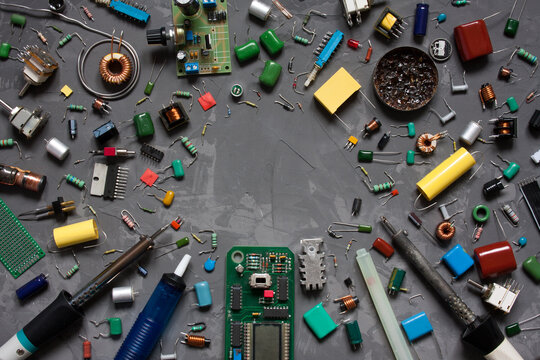In the realm of electrical engineering, circuits serve as the backbone of countless technological marvels that shape our modern world. Understanding the basic components of a circuit is crucial for anyone seeking to delve into this fascinating field. In this article, we will embark on a journey to unravel the three fundamental parts of a circuit, shedding light on their significance and interplay. Whether you're a novice enthusiast or a seasoned professional, this comprehensive exploration will equip you with the knowledge to comprehend and construct circuits with confidence.
- Power Source: Energizing the Circuit
At the heart of every circuit lies the power source, which provides the electrical energy necessary for its operation. The power source can take various forms, such as batteries, generators, or even solar panels. Its primary function is to convert stored or generated energy into a usable electrical form. Voltage, measured in volts (V), represents the potential difference between two points in the circuit and determines the flow of current. The power source sets the stage for the circuit's functionality, dictating the magnitude and characteristics of the electrical energy coursing through its components. - Conductors: Guiding the Flow
Conductors act as the pathways through which electric current flows within a circuit. These materials, typically metals like copper or aluminum, possess low resistance, allowing electrons to move freely. Wires are the most common form of conductors, facilitating the transmission of electrical energy from one component to another. Their size, material, and length influence the overall resistance of the circuit, impacting the efficiency and performance of the system. Understanding the properties of conductors is essential for optimizing circuit design and minimizing energy loss. - Components: Building Blocks of Functionality
The components within a circuit are the building blocks that enable specific functions and operations. These components can be broadly classified into two categories: passive and active. Passive components, such as resistors, capacitors, and inductors, modify the flow of current without amplification. They regulate voltage, store energy, and control the timing of signals. Active components, on the other hand, possess the ability to amplify or switch electronic signals. Transistors, integrated circuits, and operational amplifiers fall into this category, empowering circuits with complex functionalities. Understanding the characteristics and behavior of these components is crucial for designing circuits tailored to specific applications.
Conclusion:
As we conclude our exploration of the three basic parts of a circuit, we have gained a deeper understanding of their significance and interdependence. The power source breathes life into the circuit, while conductors guide the flow of electrical energy. Components, both passive and active, shape the functionality and purpose of the circuit. By comprehending these fundamental elements, we unlock the potential to create innovative and efficient electrical systems that power our world. So, whether you're an aspiring engineer or simply curious about the inner workings of technology, grasp the power of circuits and embark on a journey of limitless possibilities.


